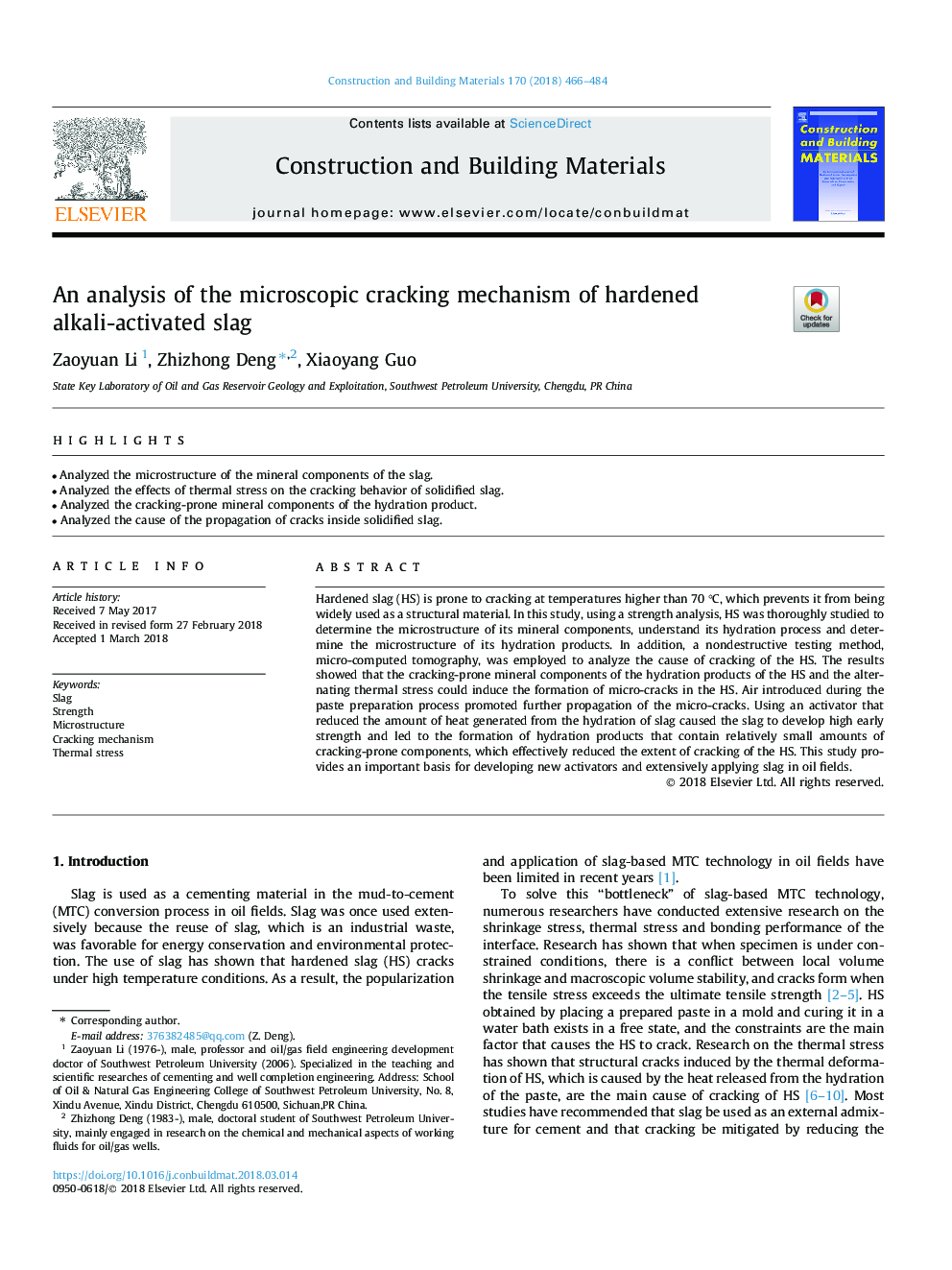| Article ID | Journal | Published Year | Pages | File Type |
|---|---|---|---|---|
| 6714210 | Construction and Building Materials | 2018 | 19 Pages |
Abstract
Hardened slag (HS) is prone to cracking at temperatures higher than 70â¯Â°C, which prevents it from being widely used as a structural material. In this study, using a strength analysis, HS was thoroughly studied to determine the microstructure of its mineral components, understand its hydration process and determine the microstructure of its hydration products. In addition, a nondestructive testing method, micro-computed tomography, was employed to analyze the cause of cracking of the HS. The results showed that the cracking-prone mineral components of the hydration products of the HS and the alternating thermal stress could induce the formation of micro-cracks in the HS. Air introduced during the paste preparation process promoted further propagation of the micro-cracks. Using an activator that reduced the amount of heat generated from the hydration of slag caused the slag to develop high early strength and led to the formation of hydration products that contain relatively small amounts of cracking-prone components, which effectively reduced the extent of cracking of the HS. This study provides an important basis for developing new activators and extensively applying slag in oil fields.
Related Topics
Physical Sciences and Engineering
Engineering
Civil and Structural Engineering
Authors
Zaoyuan Li, Zhizhong Deng, Xiaoyang Guo,
